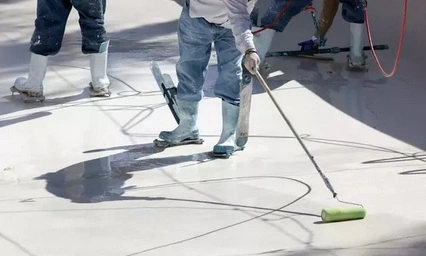The three basic types of Tampa Pool Restorations method are sandblasting wet sanding, and wet sanding with a combination of either wet sand or dry sand. The type of sand used depends on the materials to be scrubbed off of your pool’s surface, the size of your pool, and how intricate the pool’s design is. All of these factors can influence how quickly and efficiently your pool will be resurfaced. Below is a description of each method.

Sand blasting is the first choice for smaller pools. The process of sand blasting involves removing the top layer of concrete and exposing the remainder of the concrete to either loose gravel or pebbles. Then heavy machinery is used to crush and break up the concrete in layers, allowing the new aggregate to set under the stone dust.
Dry Sanding is usually done for larger pools. This process of pool resurfacing involves removing the very top layer of concrete and exposing the rest of the concrete. Then heavy machinery is used to break up and mix the aggregates together, then apply them to the surfaces that need resurfacing. Many times an external sealant is applied to prevent water from seeping in between the concrete.
Pebble Pool Resurfacing involves a method of cleaning that uses a large, high pressure washer that shoots pebbles into the existing surface. After being shot into the material they are pushed around by the high pressure spray until they are completely removed from the existing surface. This process also helps the pebbles stay on top because it pushes them into a tightly packed pile that helps keep them from simply bouncing back into the pool. This type of pool resurfacing often requires the use of a trowel. Once the pebbles are removed, abrasive material is applied to help seal the pebbles and make them adhere to the concrete.
The most popular method of getting a smooth, shiny, and fairly deep scratch-free finish on concrete is to use the best pool resurfacing products available. If you already have a surface that has been peeling, chipping, or breaking, using a product that contains resins is a great way to restore the gloss of your swimming pool. The best products will also give you the depth and shine that you want so you can enjoy your swimming pool without worrying about having unsightly scratches and imperfections.
Different types of pool resurfacing products work best with different kinds of concrete surfaces. Aggregates like coarse gravel are better suited to smaller patches of concrete surfaces that do not require too much smoothing. When concrete needs resurfacing, it is often because the aggregate has become damaged over time or the surface is unfinished. In these cases, it may be best to use a coarse aggregate that would be appropriate for a smooth finish on a large surface or to match the other surfaces in your pool.
If you need a deep scratch-free finish on a large area of concrete, using an aggregate product is an ideal choice. If you need to create a smooth finish on an uneven or unfinished surface, then using a fine aggregate is the right choice. Regardless of whether you are doing a simple pool resurfacing project to create a new look for your pool or remodeling an old pool, using one of the best products for your needs is the best way to ensure that your project looks its best. Whether you are doing a pool remodeling project to improve on an existing design or do a complete paint job, having the best product for your project will help you create the outcome you are wanting.